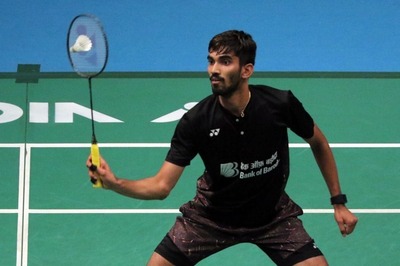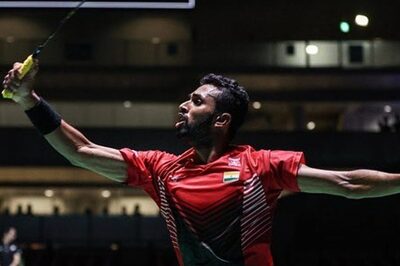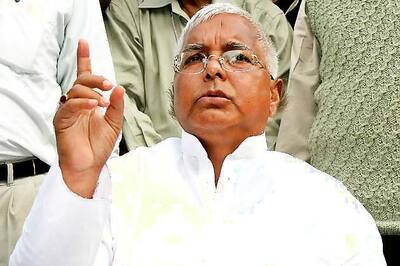
views
Last Sunday, in their maiden appearance at the Asian Games, the Indian men’s cricket team won the gold medal, which they celebrated with gusto. Several members of that side, including Ruturaj Gaikwad, the captain, have represented the senior national team, but they spoke with humility of the pride of standing on the podium, listening to the national anthem and watching the tricolour go up.
It was a seminal moment for the sport in the country, just as the women’s team performance had been 10 days prior.
More than anyone else, India’s cricketers are a very protected, maybe even pampered lot. Given the interest in the sport and the scrutiny and/or attention it attracts, they are forced to exist in their own bubble. Multi-discipline events such as the Asian Games accord them the opportunity to mingle with superstars from other sports, to maybe exchange notes and understand that there is more to life than just the pursuit of excellence in cricket.
Cricket has for long been considered an elitist sport, unwilling to spread its tentacles and happy to remain the hegemony of a select few. Indeed, until South Africa were reintroduced into the international fold in 1991 and Zimbabwe were accorded Test status in 1992, only eight nations played the longest format, which somehow didn’t resonate with its avowed desire to be known as a global sport.
The gradual mushrooming of the 50-over format was the first pivotal development towards cricket expanding from the clutches of a few, but it wasn’t until the T20 revolution started to take deep root that cricket invaded the lives of thousands of young men and women in the far recesses of the globe.
Today, 87 countries figure in the International Cricket Council’s rankings for men’s Twenty20 Internationals, 66 in the corresponding list for women. It’s far from overwhelming – the corresponding numbers are 207 for men and 186 for women, respectively, in the FIFA world rankings – but it’s a start, nevertheless, given how long it has taken for the sport to expand its wings.
The inclusion of cricket at the 2028 Summer Olympic Games in Los Angeles is a further indication of the sport’s willingness and desire to establish itself as a global attraction. Cricket has featured just once in the Olympics, in 1900 in Paris when only two teams took part and Great Britain pipped host nation France to the gold medal.
The sport is played by nearly half the world’s population, yet it isn’t inclusive. A return to the Olympics will boost its profile more than that of the quadrennial Games themselves, a development the ICC is determined to take to its logical conclusion.
Mere presence at the Olympics will not make cricket a universal allurement like athletics or football or swimming. For all the tom-tomming with regard to the exponential increase in the number of countries where it is being played, cricket is still in its infancy in most nations. But the 20-over format has presented the sport’s governing body with a vehicle to propagate the discipline in far corners such as Papua New Guinea and Cambodia, Botswana and Eswatini.
Even as cricket desired to move beyond the traditional pockets, its very nature prevented it from carrying mass appeal. Test matches, lasting five days and carrying no guarantee of a result, didn’t cut ice with an overwhelming majority, which felt that even 50-overs cricket was too long to strike an immediate chord. It was left to the much-maligned 20-over version, now considered a realistic threat to the existence of its older 50-over sibling, to act as the magnet.
The snappy format – from a cricketing perspective because, after all, the sport’s shortest international format is still twice as long as a 90-minute game of football – with an onus on power, athleticism and razzmatazz proved a concoction impossible to resist in different pockets of the globe. That, combined with the ICC’s well-intentioned efforts to spread awareness of and interest in the game gradually bore fruit with more and more nations embracing the upstart format and, by extension, the sport itself.
It will take cricket a long, long time to storm into the consciousness of the sporting world like athletics or football have done. Cricket isn’t a simple game to play; it also requires infrastructure which is a lot more complex and non-negotiable. Currently, not many can afford to put these in place for obvious reasons, primary among them financial constraints, the need for space and limited mass participation.
Merely positioning itself as an Olympic discipline alone will not ignite an instant turnaround in mindsets, but it will help spread awareness among an audience not accustomed to the nuances of such a sport and holds the potential to inspire younger generations to try their hand at the game of bat-and-ball, which can become addictive over time.
The success of sport, any sport, stems from its reach, from how much it is able to touch lives and peoples, and from its ability to unite and unify. Cricket hasn’t been divisive as much as it has been insular and self-involved. The Olympic tag will elevate its standing and rid it of the colonial hangover that has been such a deterrent in its bid to become a mass attraction.
R Kaushik is a Bengaluru-based cricket writer with more than 32 years’ experience. He is the co-author of VVS Layman’s autobiography ‘281 and Beyond’, Gundappa Vishwanath’s autobiography ‘Wrist Assured’, R Sridhar’s memoir ‘Coaching Beyond’ and is the joint author with WV Raman of ‘The Lords of Wankhede’. Views expressed in the above piece are personal and solely that of the author. They do not necessarily reflect News18’s views.




















Comments
0 comment